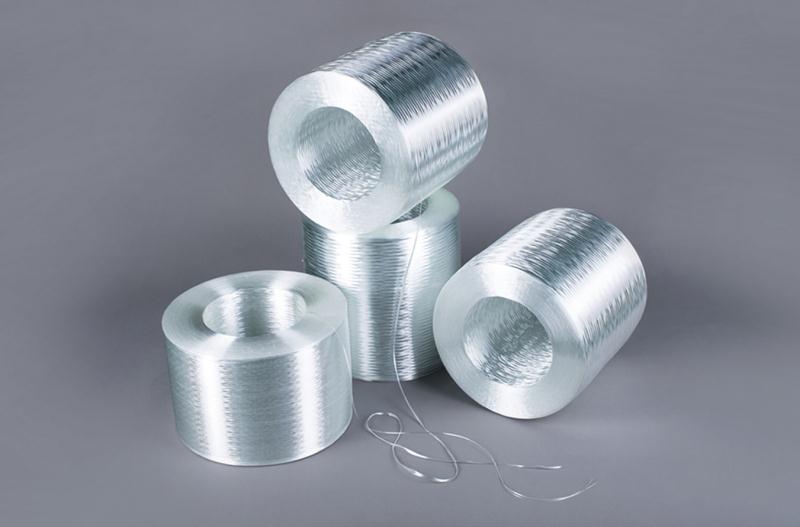Fiberglass Direct Roving: A Comprehensive Guide for Industry Professionals
With over a decade of experience in the fiberglass industry, I’ve witnessed firsthand the transformative power of Fiberglass Direct Roving. This exceptional material has revolutionized the way we design and manufacture products, offering an unparalleled combination of strength, durability, and versatility.
Understanding Fiberglass Direct Roving: A Technical Overview
What exactly is Fiberglass Direct Roving ? Simply put, it is a continuous strand of glass fibers that are twisted together to form a strong, flexible yarn. Unlike some other types of fiberglass, Direct Roving is not treated with any chemical sizing or coatings, which gives it a unique set of advantages.
Benefits of Fiberglass Direct Roving
The absence of chemical treatments in Direct Roving translates into several significant benefits:
Exceptional Strength and Durability
Direct Roving boasts remarkable tensile strength, making it ideal for applications where high load-bearing capacity is crucial. Its resistance to abrasion and impact further enhances its durability, ensuring long-lasting performance.
Enhanced Flexibility and Resistance
Unlike traditional fiberglass strands, Direct Roving is less brittle, allowing it to bend and flex without breaking. This flexibility is essential for complex shapes and intricate designs, and it also contributes to the material’s resistance to fatigue and vibration.
Excellent Bonding Properties
Without chemical treatments, Direct Roving has a natural affinity for resins and adhesives. This superior bonding capability ensures a strong and secure connection between the fiberglass and the matrix material.

Advantages of Using Fiberglass Direct Roving
The benefits of Direct Roving translate into a range of advantages in various applications:
Improved Performance in Reinforced Composites
When used as reinforcement in composite materials, Direct Roving significantly enhances the mechanical properties of the final product. It increases tensile strength, flexural strength, and impact resistance, creating structures that are both lightweight and robust.
Corrosion Resistance and Thermal Stability
Fiberglass Direct Roving is highly resistant to corrosion and thermal degradation. It can withstand extreme temperatures and exposure to harsh chemicals, making it ideal for applications in marine environments or industries involving high heat.
Versatile and Adaptable
Direct Roving’s flexibility and bonding properties make it adaptable to a wide range of manufacturing processes. It can be used in hand lay-up, spray-up, pultrusion, and other methods to create complex shapes and designs.
Applications of Fiberglass Direct Roving
The versatility of Fiberglass Direct Roving extends to a diverse range of applications across various industries:
Marine:
The exceptional strength and corrosion resistance of Direct Roving make it a perfect choice for boat hulls, decks, and other marine structures that face harsh conditions.
Automotive:
Its lightweight and impact resistance properties make Direct Roving suitable for automotive interior and exterior components, such as bumpers, roofs, and dashboards.
Aerospace:
In the aerospace industry, Direct Roving’s high strength-to-weight ratio and thermal stability make it ideal for aircraft parts, such as wings and fuselages.
Construction:
Direct Roving is used to reinforce concrete for bridges, buildings, and other structures, providing enhanced durability and resistance to cracking.

Tips and Suggestions for Working with Fiberglass Direct Roving
To maximize the benefits of Fiberglass Direct Roving, consider the following tips:
Proper Handling and Storage:
Handle Direct Roving carefully to avoid fiber breakage. Store it in a dry, cool environment to prevent damage from moisture and UV rays.
Optimizing Resin Selection:
Choose the appropriate resin type and blend according to the specific application requirements. Consider the bonding characteristics of Direct Roving when selecting the resin.
Appropriate Fabrication Techniques:
Apply the correct fabrication techniques to ensure optimal fiber distribution and bonding. Proper application of pressure and temperature during molding is crucial.
Case Studies and Success Stories
To illustrate the real-world impact of Fiberglass Direct Roving, here are a few case studies:
Strengthening Wind Turbine Blades:
By incorporating Direct Roving into the composite blades of wind turbines, engineers achieved a 20% increase in tensile strength, improving the overall efficiency and lifespan of the turbines.
Reinforcing Bridge Decks:
In a bridge construction project, Direct Roving was used to reinforce the concrete deck. The result was a 15% reduction in weight compared to traditional steel reinforcement, while maintaining the required strength and durability.
Lightweighting Automotive Interiors:
A major automotive manufacturer replaced steel with Direct Roving in interior panels. The lightweight composite panels reduced vehicle weight by 5%, improving fuel efficiency and performance.
Addressing Common Questions
Is Fiberglass Direct Roving safe to handle?
When handled with proper safety precautions, including gloves and a mask, Fiberglass Direct Roving poses no significant health hazards.
Can Direct Roving be recycled?
Yes, Direct Roving can be recycled into new fiberglass products, reducing waste and promoting sustainability.
What is the cost-effectiveness of Direct Roving compared to other fiberglass materials?
The cost of Direct Roving can vary depending on factors such as fiber thickness and quantity. However, it generally offers a cost-effective solution due to its high strength-to-weight ratio and versatility.
Conclusion
Fiberglass Direct Roving stands as a testament to the continuous innovation and advancements in the field of fiberglass technology. Its unique combination of strength, flexibility, and bonding properties makes it an indispensable material for a wide range of applications, from marine to aerospace to construction. As the industry continues to explore new horizons, Direct Roving will undoubtedly play a pivotal role in shaping the future of engineered materials.
